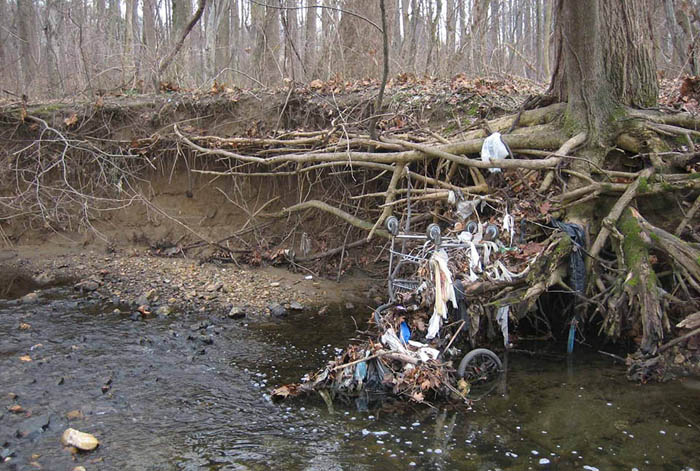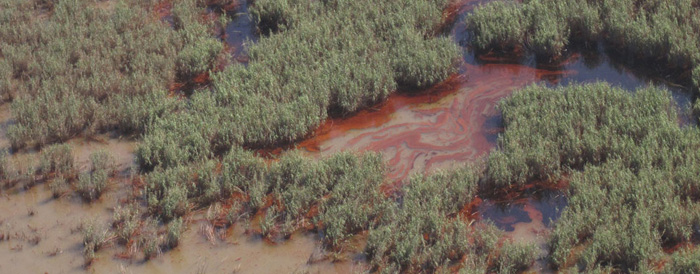
Southern steelhead are iconic to southern California history and culture, but now are endangered and nearly forgotten. NOAA helps recovery of these species by working with partners to restore their important coastal habitats. NOAA image credit.
NOAA Science Plays an Important Role Restoring Coastal Places
NOTE: The following are comments and aggregations of NOAA reports on how garbage, oil spills, chemicals, and pollutants make their way to the ocean, and the economic burden these environmental failures impose on the economy, recreational fishing, and the health of our nation. — Skip Clement
Thousands of oil spills happen every year, and most pollution cases don’t make the news. But when there’s a significant oil spill or pollutant found in the water, you hear about it. Local, state, and federal government agencies rush to clean up the mess. In many cases, after a few days or weeks, it’s out of the spotlight, but it’s just the beginning of the story, however.
It can take years or decades for waterways to recover from pollution. NOAA is just one of the federal government agencies tasked with settling in for the long haul. Its role is to use science to figure out exactly what damage has been done so that ecosystems can be restored.
Cleaning Up Urban Coastal Waterways. Protecting the health of the ocean often starts on land
[dropcap]P[/dropcap]lastic trash and other garbage that isn’t correctly disposed of often makes its way to the ocean. Fertilizers, pesticides, and other chemicals can be released from industrial sites into rivers and the ocean. Pollution that starts on land can have significant and lasting impacts not only on the environment but also on the fish, wildlife, and people who live in and along affected waterways. Pollution makes humans less healthy, decreases their quality of life, lowers property values, and weakens local economies.
As an example, urban pollution in Baltimore, Maryland, has been tough on the Chesapeake Bay and on the humans who live nearby. One place in the Chesapeake Bay region where harmful debris and pollution comes from is a former landfill site outside of the city. From the 1950s to the 1970s, commercial and industrial waste, including solvents, paints, waste oils, and tires, were dumped in seven former landfills close to wetlands and streams in Rosedale, Maryland. These streams empty into rivers that end in the Chesapeake Bay.
Cleanup at the site started in 2008, and it’s still ongoing. NOAA research helped secure $3.1 million in a legal settlement to fund these projects. Scientists studied the site and helped develop projects to restore contaminated soil and water like racks that will collect trash floating downstream. Other initiatives include invasive species control, wetlands enhancement, and stream restoration.

Garbage that isn’t properly disposed in cities, suburban communities, and rural hamlets often makes its way to the ocean via streams and rivers. NOAA image credit.
The U.S. economy is very dependent on healthy coastal and ocean resources. Consider the following facts:
- Fourteen percent of U.S. counties that are adjacent to the coast produce 45 percent of the nation’s gross domestic product (GDP), with close to three million jobs (one in 45) directly dependent on the resources of the oceans and Great Lakes.
- In 2014, the ocean economy, which includes six economic sectors that depend on the ocean and Great Lakes, contributed more than $352 billion to the U.S. GDP and supported 3.1 million jobs.
- Tourism and recreation account for 72 percent of the ocean economy’s total employment and 31 percent of its GDP. Offshore mineral extraction accounts for another 43 percent of the ocean economy’s GDP.
- Almost 2.3 million people are employed by ocean-based tourism and recreation.
- Workers in the ocean-based tourism and recreation sector earn over $55 billion in annual wages.
- Ocean-based tourism and recreation contribute approximately $116 billion in gross domestic product to the national economy each year.

Recent oil spill and a great redfish spot near Barataria Bay, Louisiana – gone.
Ocean and coastal waters face many threats, including marine debris, industrial pollution, and oil spills. Contamination means that fish can’t be eaten, people can’t enjoy the beach, and local economies take a hit. NOAA scientists help make sure that damage to these invaluable resources is understood so that effective plans to restore their health can be carried out, even when it takes years or decades. From East to Gulf Coast and West to “Third” Coast (Great Lakes), NOAA science leads to cleaner and safer ocean, coastal, and Great Lakes waters.

